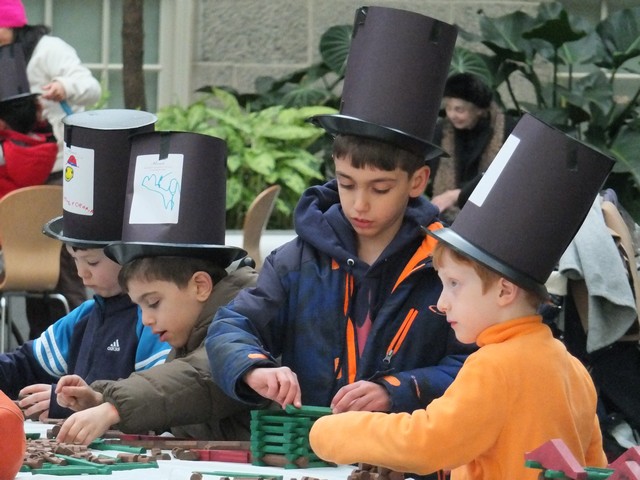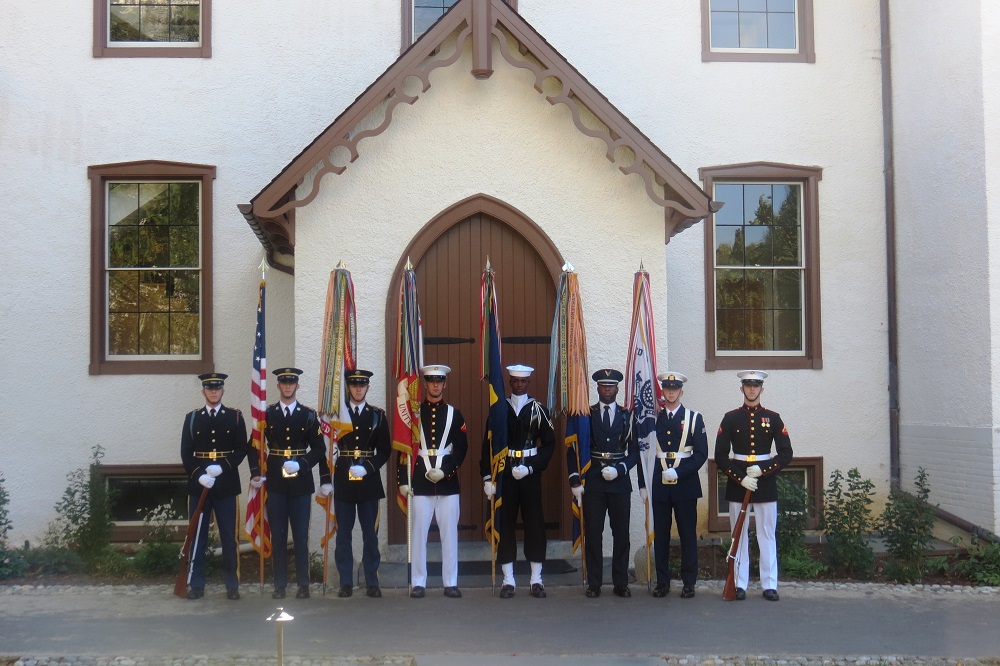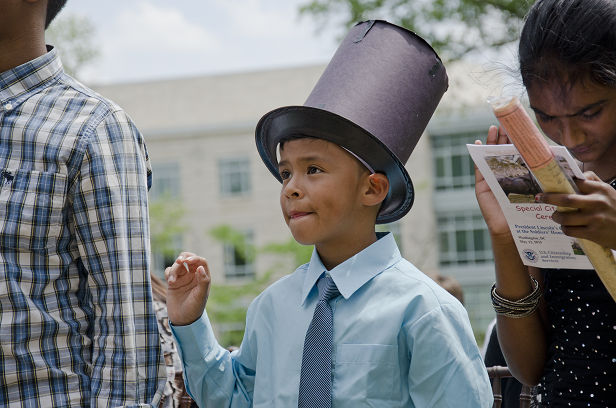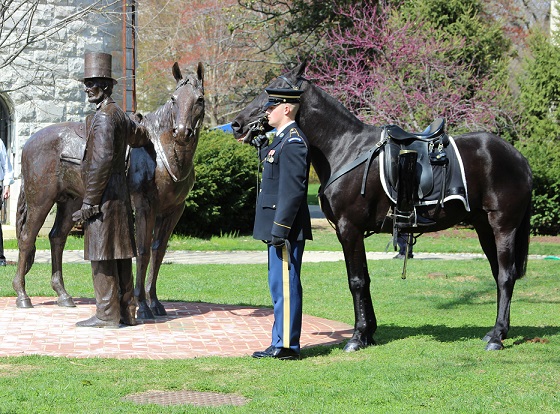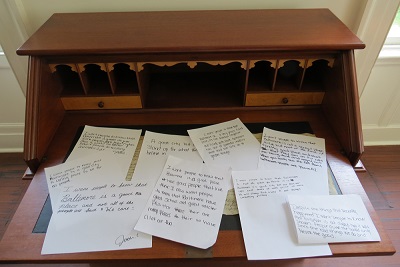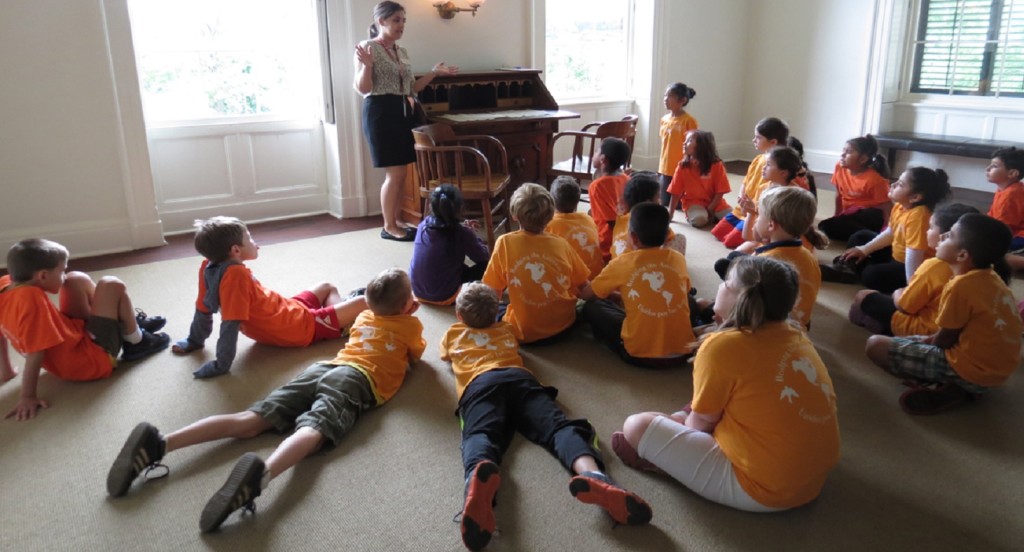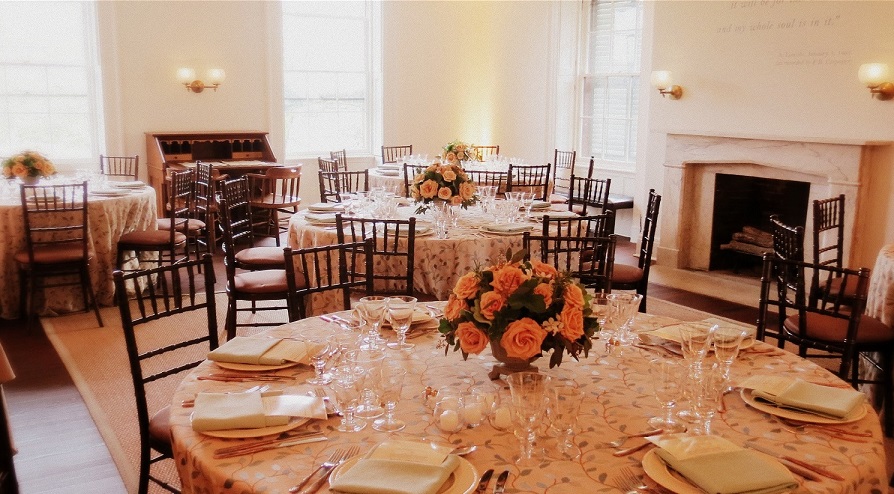In January 2016 staff at President Lincoln’s Cottage each received new, redesigned business cards. Aside from design changes and updated contact information, the business cards also featured space for each staff member to choose a custom photo that exemplifies their connection to the Cottage. Below are the images and each staff members explanation for why that image expresses their work and the inspiration they draw from the Cottage.
Nora Cobo, Associate Director for Development
When you think of a historic house museum, you typically think of roped-off furniture and quiet tours. I chose an image from our “Lincoln’s Hat” program for my business card because that program so concisely explains how and why President Lincoln’s Cottage is so unique. This program is entirely about Lincoln’s ideas, and it is enacted in such a creative, inquiry-based way. Yes, we have the historical house and the guided interpretation, but our focus on big questions and bigger ideas is what makes this place so special.
Jamie Cooper, Museum Store Coordinator
I chose the Military Honor Guard because they are a visual reminder of the sacrifices made by many Americans; whether it be during the Civil War or today. The photo also connects to the Commander-in-Chief, Abraham Lincoln, and the company detachment stationed at the Soldiers’ Home to serve as protection for the 16th President. Lastly, it’s a reminder of the Soldiers’ Home itself; a place that brought new life to many veterans during the Civil War. This image provides a reason to think deeply about what this site means to the people who lived here during the Civil War and for the veterans who live here today.
Curtis Harris, Marketing and Membership Coordinator
My photo is of the Soldiers’ Home National Cemetery, the first national cemetery for the United States. Visited by President Lincoln, this cemetery is just several hundred feet from the Cottage and is the resting place for over 5000 U.S. military personnel from the Civil War. Moreover, General John Logan, who formalized Memorial Day celebrations in 1868, is also buried there. Logan proclaimed Memorial Day as a time to honor the people who had fought against “rebellious tyranny” and for the liberation of “a race in chains.” Lincoln and Logan, the Cottage and the cemetery are reminders that our struggle against tyranny and for liberty is costly, but future generations will be thankful and remember the work done to make their lives better.
Callie Hawkins, Associate Director for Programs
Each May, President Lincoln’s Cottage hosts a Youth Naturalization Ceremony sponsored by the United States Citizenship and Immigration Services. For twenty young people and their families, years of hard work, sacrifice, and hope culminate in a ceremony many of them have anticipated since their journeys began, and at a place where our 16th president appreciated and nurtured those dreams. The image I chose for my card—a young boy taking the Oath of Citizenship at President Lincoln’s Cottage (in a stovepipe hat, no less)—is a symbol of the day I’m proudest to be both an American and an employee of President Lincoln’s Cottage.
Zach Klitzman, Executive Assistant
I’ve participated in many different public programs at President Lincoln’s Cottage, but I think the most meaningful was Lincoln’s Last Ride in April 2015. Lincoln’s daily commute separated the demanding and often frustrating work at the White House from the reflection and meaning he enjoyed at the Cottage. Retracing this path, in commemoration of his last ride to the Cottage, was quite moving—especially with horses and riders from the Fort Myer Caisson Platoon echoing his funeral procession. So I chose the picture of the riderless horse standing opposite our statue of Lincoln not just because of the great symmetry. I also chose it because it symbolizes the type of groundbreaking, thought-provoking public programs we take pride in at President Lincoln’s Cottage.
Michelle Martz, Program Coordinator
A month after the riots and protests over Freddie Gray’s death in April 2015, 8th grade students from Baltimore visited the Cottage. While the rest of the world watched the events on the news, these students endured the crisis that took hold of their home city. After discussing their experiences, the students wrote their visions and realities of Baltimore by starting with the prompt, “I want people to know that Baltimore is…” I chose a photo of the students’ ideas. You can see our blog for more information about their experience.
Erin Carlson Mast, Executive Director
This image shows students at home in the Cottage radiating out from the storyteller and the desk, a symbol of the big ideas that were nurtured here. On first glance, a viewer might not notice that there are no velvet ropes. You can be part of the space, rather than looking into it from behind a barrier. Even though the subject matter is intense and complex, the lack of barriers means this is a space and a place that’s comfortable for them.
This picture also shows that no one here is an island; we all rely on one another to achieve the mission. At its most basic, this is a staff member delivering an education program. In reality, it’s the outcome of years of hard work by our board, staff, contractors, and volunteers to preserve, research, fundraise, develop, interpret, train, and engage the public. This picture is also a reminder of why we do these things. We’re committed to being here, to keeping this authentic place available to people when they need it most.
Sahand Miraminy, Events Coordinator
I love this photo of the Emancipation Room set for a seated reception. It’s a beautiful, light filled room that’s steeped in history. Our guests are given a very rare opportunity to create their own memories in the same spaces used by the Lincoln family, and you can see their eyes light up when they walk in the room. It’s truly a one of a kind experience.
